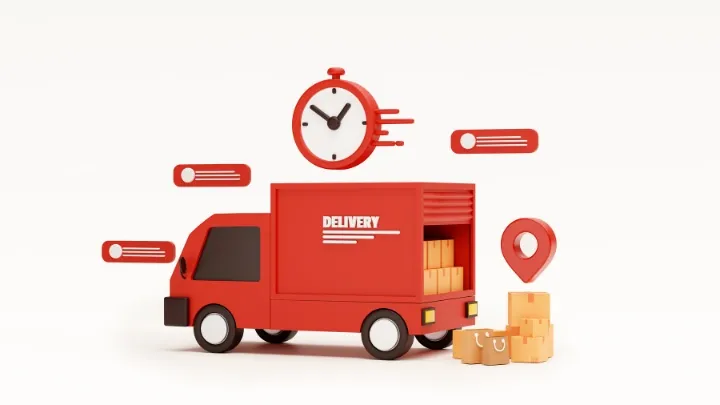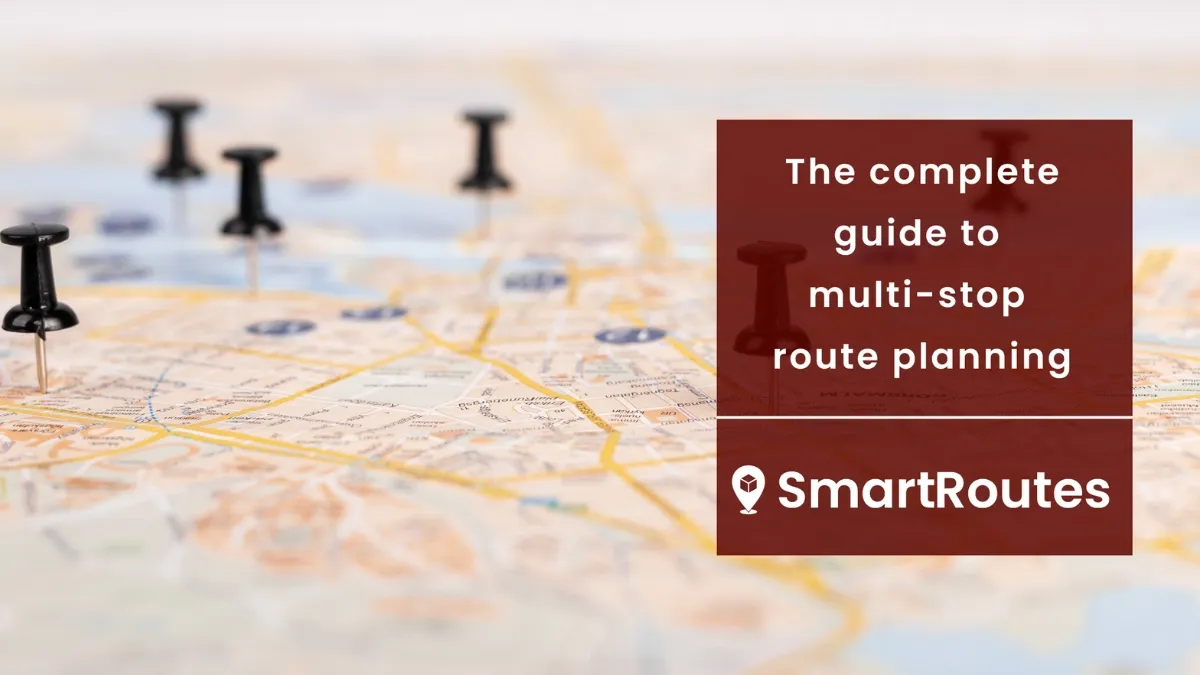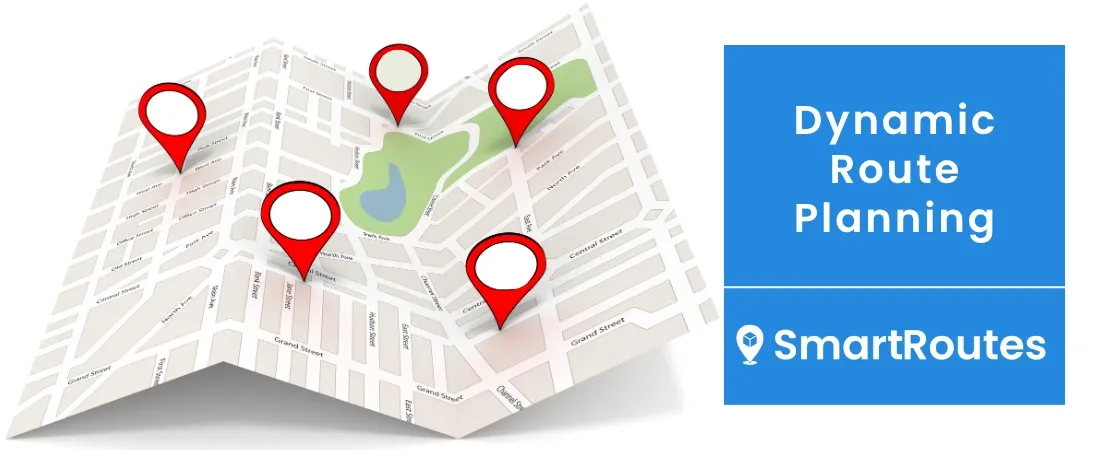Businesses today are constantly challenged to meet growing customer demands. The ultimate goal is to deliver products or services efficiently, but what happens when orders flood in faster than you can organize them?
With the rise of e-commerce, customers have grown accustomed to making purchases with just a click of a button (I know I have!). This convenience sets off a complex chain of logistics to get the ordered items to the customer's doorstep in a matter of days or even hours. However, the meticulous organization required to manage these deliveries often goes unnoticed (except by those of us responsible for ensuring goods reach their destinations on time!)
Enter dynamic route planning—a true game-changer for businesses, allowing them to focus on other crucial aspects of their operations instead of spending countless hours on manual route planning.
In this guide, we’ll explore everything you need to know about dynamic route planning, including what it is, how it compares to static route planning, and why dynamic route planning software is essential for modern logistics.
What is Dynamic Route Planning?
Dynamic route planning involves creating a new, optimized route every day (or as frequently as needed) for one or more drivers. Unlike static routes, which remain the same each day, dynamic routes are highly adaptable, allowing businesses to add or remove stops, adjust delivery times, and reallocate resources based on real-time needs.
This system is particularly useful in industries with fluctuating demand or those that serve a wide geographic area. With dynamic route planning, businesses can respond to last-minute orders, unexpected changes in delivery conditions, and customer preferences more effectively.
SmartRoutes Route Planning Software
Streamline your entire delivery process, all from one platform

Static vs. Dynamic Route Planning
Static routes follow a predefined schedule and path, often set in advance. This approach works well for businesses with consistent delivery patterns and a steady customer base. Since routes do not change frequently, they can be more cost-effective on a per-delivery basis. However, the rigidity of static routes can lead to missed business opportunities if there’s no flexibility to accommodate customer requests, such as changing delivery times or locations.
Dynamic route planning, on the other hand, is all about flexibility. Routes are generated based on real-time orders and they can be adjusted as new orders come in or as delivery conditions change. While dynamic routes may involve more complex planning, they provide significant advantages, especially for businesses with variable delivery needs. Dynamic routes allow for better resource allocation, quicker response times, and enhanced customer satisfaction.
Both static and dynamic route planning have their place, depending on the business model. However, dynamic routes are challenging to plan manually, which is why dynamic route planning software is becoming indispensable.
Dynamic Route Planning Software
Dynamic route planning software automates the process of creating and optimizing delivery routes. This intelligent software uses advanced algorithms to group orders efficiently, minimizing travel time and fuel costs while maximizing delivery accuracy.
Key features of dynamic route planning software include:
- Real-time adjustments: Automatically update routes as new orders come in or as delivery conditions change.
- Order grouping: The software intelligently groups orders to create the most efficient delivery sequence.
- Time window management: Ensure deliveries are made within specified time windows to meet customer expectations.
- Driver scheduling: Optimize driver schedules to balance workload and avoid unnecessary overtime.
Benefits of Dynamic Routing Software
Increased Flexibility
Dynamic route planning offers unparalleled flexibility compared to traditional static routing.
With dynamic routing, businesses can adapt to changes in real-time, whether it’s adding a new stop to an already active route, accommodating last-minute orders, or adjusting delivery times based on customer preferences.
This level of adaptability allows businesses to efficiently manage sudden spikes in demand, such as during peak shopping seasons or promotional events. It also better supports business growth by enabling the seamless integration of new customers and markets without the logistical challenges typically associated with expansion.
Improved On-Time Delivery Rates
Timely delivery is critical for customer satisfaction and maintaining a competitive edge. Dynamic route planning software enhances on-time delivery rates by continuously optimizing routes based on real-time data.
The software can account for factors like traffic conditions, weather changes, and road closures, rerouting drivers as needed to avoid delays. This proactive approach ensures that drivers can meet delivery windows more consistently, reducing the likelihood of late deliveries.
For businesses, this not only improves customer satisfaction but also minimizes the costs associated with failed or delayed deliveries, such as rescheduling or compensating customers for late arrivals.

Reduced Delivery Costs
Cost efficiency is a major concern for any business involved in logistics. Dynamic route planning software helps reduce delivery costs in several ways. By optimizing routes to minimize travel distance and time, the software cuts down on fuel consumption, which is a significant operational expense.
Additionally, it reduces vehicle wear and tear, leading to lower maintenance costs and extending the lifespan of the fleet. The software’s ability to consolidate deliveries and maximize load efficiency also means fewer trips are needed to complete the same number of deliveries, further reducing costs.
These savings can be substantial, especially for businesses with large delivery networks, and can be reinvested into other areas of the business or passed on to customers in the form of lower delivery fees.
Live Tracking of Drivers and Orders
One of the standout features of dynamic route planning software is the ability to monitor deliveries in real-time. Live tracking provides businesses with full visibility into the location and status of each driver and order.
This feature allows dispatchers to make informed decisions quickly, such as rerouting a driver to avoid a traffic jam or addressing customer inquiries about delivery status with accurate, up-to-the-minute information.
Live tracking also enhances accountability and security, as businesses can ensure that drivers are following the planned routes and schedules. For customers, live tracking often translates into peace of mind, as they can receive real-time updates on their delivery status, which enhances the overall customer experience.
Robust Analytics
Data-driven decision-making is essential for optimizing operations and improving efficiency. Dynamic route planning software provides robust analytics that offer deep insights into delivery performance.
Businesses can analyze key delivery metrics such as average delivery time, route efficiency, driver performance, and fuel consumption. These analytics help identify patterns and trends, such as consistently underperforming routes or peak delivery times, allowing businesses to make informed adjustments.
Happier Customers
At the heart of dynamic route planning is the goal of improving customer satisfaction. By offering more reliable and flexible delivery options, businesses can better meet the expectations of their customers.
On-time deliveries, accurate delivery windows, and the ability to accommodate last-minute changes all contribute to a positive customer experience.
Happier customers are more likely to become repeat customers and to recommend your business to others, driving growth through increased loyalty and positive word-of-mouth.

Final Thoughts: Why Dynamic Route Planning is Essential for Your Business
Dynamic route planning is no longer a luxury—it’s a necessity for businesses looking to stay competitive in today’s fast-paced market. By leveraging dynamic route planning software, companies can streamline their delivery operations, reduce costs, and enhance customer satisfaction.
Ready to optimize your delivery routes? Try SmartRoutes for free today and see how dynamic route planning can transform your business.
FAQ
1. What types of businesses can benefit most from dynamic route planning?
Dynamic route planning is particularly beneficial for businesses with fluctuating demand, such as e-commerce, food delivery, courier services, and field service operations. Any business that requires frequent and flexible delivery schedules can gain significant advantages from implementing dynamic route planning.
2. How does dynamic route planning software handle last-minute orders?
Dynamic route planning software is designed to integrate last-minute orders into existing routes efficiently. It uses real-time data and algorithms to adjust routes on the fly, ensuring that new orders are delivered without significant delays or disruptions to the original schedule.
3. Can dynamic route planning be integrated with existing logistics systems?
Yes, most dynamic route planning software solutions are designed to integrate seamlessly with existing logistics and fleet management systems. This allows businesses to streamline their operations without overhauling their entire infrastructure.
4. What is the difference between a static route and a dynamic route?
A static route follows a fixed, predetermined path and schedule that does not change day-to-day. This is useful for consistent, repetitive deliveries but lacks flexibility. In contrast, a dynamic route is created in real-time based on current orders, traffic conditions, and other variables, allowing for greater adaptability and efficiency in responding to changing delivery needs.
If you enjoyed this blog, you might also be interested in:




